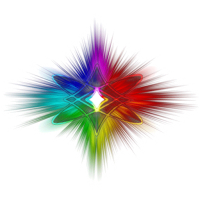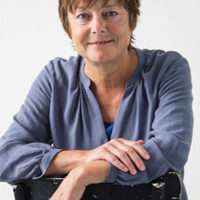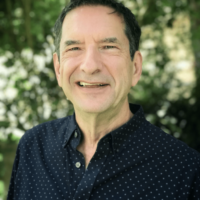Uncertainty. Doubt. Restlessness. Unease. Anxiety. Fear. The stuff that wakes you up in the night. Or keeps you from falling asleep in the first place. Not knowing what is going to happen. Not knowing what the future will be. Not knowing…. Not knowing….
Elections, hurricanes, storms, wars…. Losing someone or someplace dear…. A relationship in crisis…. Not knowing what will come. Not knowing….
Kai Skye’s story art print “single step” showed up in my inbox a couple of weeks ago. The text goes like this:
so much changes
when you trust
yourself to
follow a path
you only see
a single step
at a time—Kai Skye
When you’re living in uncertainty, restlessness, or unease, a single step may be all you can see. And sometimes, not even that. Yet there are things you can do to begin to trust yourself and find a way forward. Simple things. That doesn’t mean that they’re necessarily easy or that they will work right away—they are practices. Yet the practices themselves are simple. And that’s a start.

So, here are two simple exercises—two simple practices to help you build trust in yourself. You might want to listen to the recording of this post (see the player at the top of the article) so that you can focus solely on the experience itself and not be distracted by reading instructions.
Practice #1—Breathing into your bones
The idea of breathing into your bones might seem strange at first yet stay with me. When you feel anxiety, fear, doubt, or any debilitating emotion creeping in, go right away to this preventive practice so the emotion doesn’t take over.
This is the short version of this practice. You can choose the full version if you want to go further.
From whatever position you are currently in—sitting, standing, or lying down—take a deep breath. As deep as you can. And then another.
Then shift your position if necessary, so that you can feel your feet on the ground and you can lean back against a wall or against the back of your chair. If you are lying down, lie flat on your back so that as much as possible, you can feel the length of your spine against the floor or bed.
Now begin breathing into your spine. Deep and full breaths into your spine. Then breathe through your spine into the floor or bed or into the wall. And then again.
As you keep breathing, expand your breath into your pelvic bones—spine and pelvis. And then into the bones in your legs and feet. Breathing into your bones.
Now add your shoulder blades and the bones in your arms and fingers. Breathe into the bones of your shoulders, arms, and fingers.
And then add your ribs. Breathe into your ribs.
So that now you are breathing into your whole skeleton—into the physicality of your being. Notice what is happening inside you. What is shifting in your feelings and emotions?
When you can feel your energy start to get calmer and more balanced, then continue to the second exercise. It’s ok if you aren’t yet completely calm and still inside. The point of this first exercise is to help you get a bit more centered and grounded so that we can work further.
Practice #2—Transforming Feelings and Emotions
For this second exercise, you may sit, stand, or lie down. The important thing is that your back is straight and your body aligned.
Whatever it is you are feeling—doubt, fear, anxiety, restlessness, confusion—start by letting the feeling be there. Don’t try to push it away or get rid of it or talk yourself out of it. It’s what is here. It’s what is real right now. It’s ok. Let’s work with it.
Begin by calling it what it is—naming the feeling as “fear” or “doubt” or however you identify it. If you don’t know what to call it, ask it what it wants to be called, and trust that it will tell you.
Notice where that feeling lives inside of you. And then breathe into that place in your body. Imagine space around the feeling and breathe into that space. Give your feeling space to breathe. And then breathe into the feeling itself. And notice how that feeling is holding onto you—how it has attached itself to you. You might get an image of what that looks like, or it might just be a feeling. There’s no right or wrong way. Just notice. Breathe into that “hold”—give it space—allow it to ease and maybe even release.
In the same way, notice whether you are also holding onto it—it could be that you have also attached yourself to the feeling. It’s ok; it happens to all of us from time to time. So, no judgment, just notice. And give it space. Allow your hold on the feeling to ease and maybe even release.
Whether the feeling is holding onto you, or you are holding onto the feeling, or both, let the holds soften until you can more easily allow some breathing space around the feeling.
As your breathing gets easier, let the feeling float out of your body into the space in front of you. Don’t worry about how to do that. Trust that it can happen.
Notice how the feeling shows itself to you. It might have a color or a shape or a form, or maybe a texture or a sound, or it might simply be a feeling. Again, there is no right or wrong.
Now that the feeling is outside of you, ask it to dissolve into pure energy. Again, don’t worry about how to do that. Trust that the feeling can respond to your request and dissolve into energy. As it does, what words would you use to describe that energy? Give yourself a moment or two to be with this energy and notice what is happening inside of you.
When you are ready, ask the energy to transform into a feeling or thought or understanding that can serve you going forward. Again, trust that the energy knows how to do this. Allow time for this transformation to happen. As it does, what words would you use to describe this energy now? And notice once more what is happening inside of you.
When the energy has transformed, let it float back into your body. It might return to the same place where the initial feeling was living, or it might land someplace else. Just notice, and then breathe into this transformed energy. What is the feeling inside of you now?
Take a few moments to get used to this new feeling and how you relate to it. What becomes possible now because the feeling has transformed? And what do you sense could be your next step?
This simple exercise gives you a way to work with your feelings and emotions rather than fight against them or try to get rid of them. It gives you a way to stay with a situation and the feelings that arise with compassion, love, and honesty. Your situation or circumstance may not have changed on the surface, yet perhaps there has been a shift in your relationship to it.
These two exercises are not magic tricks. They’re practices to help you re-calibrate your system, to return to your center and grounding, and to transform feelings and emotions so that you are better able to move forward. They are practices for building resilience and trust in yourself.
Acceptance Opens Possibilities
Accepting what is in front of us as well as our feelings about it gives us space and possibility to work with whatever is happening. Fighting against a situation often keeps us from being able to move forward. These two practices give us ways to transform feelings into energies that can serve us, allowing us to be more present and work with the realities of what is happening. The more we are present with those realities and willing to work with them, the easier it is to sense the guidance and direction that is nearly always present deep within life’s unfolding. And the more we learn to trust in ourselves.
In today’s complex world, that guidance and direction may not show you the full pathway ahead. It may only show you a next step. It’s ok. Take that step. And then give yourself a little time and space to get used to where that takes you. Breathe into your bones.
Soon, another single step will show itself. Trust. Take that step. And then, once again, give yourself time and space to get used this movement. Breathe into your bones.
so much changes
when you trust
yourself to
follow a path
you only see
a single step
at a time—Kai Skye
A single step at a time. Sometimes that’s all we have. Let that be enough for now. Trust. In time, perhaps you will see two steps. And then maybe even three. In today’s restless and uncertain world, that’s often all we’re going to get—we’ll only be able to see one, two, or three steps ahead. Let that be enough for now. You can do this. Take each step as it comes. Trust.





































